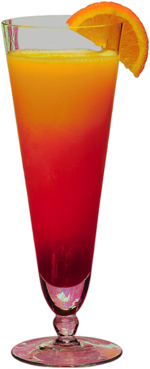Breast Cancer and the Gang of Four
People of a certain age will remember the ominous "Gang of Four" who were primarily blamed for the events of the Cultural Revolution in China.
Now new research published in the journal Nature has exposed an equally ominous "Gang of Four," but this time it is a set of four genes is responsible for the lethal spread of breast cancer.
A team in New York with researchers now working at the Hospital Clinic de Barcelona and the Institute for Research in Biomedecine in Spain, has identified four key genes in human breast cancer cells that play a role in metastasis, or the spread of the cancer, to the lungs.
A number of genes are already known to contribute to the spread to the lungs. But Prof Joan Massagué and colleagues at Memorial Sloan Kettering Cancer Centre, New York, now show how four co-operate to promote the formation of new tumour blood vessels, the release of cancer cells into the bloodstream, and the penetration of tumour cells from the bloodstream into the lung.
The gene set comprises EREG, MMP1, MMP2 and cyclooxygenase (COX2). (That is the same COX2 that you will have heard about as a target for some arthritis and anti-inflammatory medicines. It is the abnormal activation of all four that enables the breast cancer to invade the lungs. Although shutting off these genes individually can slow cancer growth and metastasis, the researchers found that turning off all four had a dramatic effect.
Prof Massagué said:
"The remarkable thing was that while silencing these genes individually was effective, silencing the quartet nearly completely eliminated tumour growth and spread."
In experiments on human breast tumours implanted in mice, the researchers also found that they could reduce the growth and spread of the disease by simultaneously targeting two of the proteins produced by these genes, using drugs already on the market.
"We found that the combination of these two inhibitory drugs was effective, even though the drugs individually were not very effective," said Prof Massagué. "This really nailed the case that if we can inactivate these genes in concert, it will affect metastasis."
The researchers now want to test combination therapy with the drugs – cetuximab (Erbitux) and celecoxib (Celebrex) – to treat breast cancer metastasis.
The other two genes are matrix metalloproteinases (MMP1 and MMP2) that are involved in the formation of new blood vessels.
A second study, also published in Nature, reports that investigators in Texas have isolated 87 genes that seem to affect how sensitive human cancer cells are to certain chemotherapy drugs.
The study highlights a new way to screen for alterations in cancer cells that make them specifically sensitive to treatments, so that they may leave normal tissue relatively unharmed.
This is important work that unlocks another piece of the mystery of at least one type of cancer.
It will not be the whole story: we still need to find out why tumors can spread to other organs and how environmental factors, including states of mind, may have an impact on the spread of tumors.
And it is yet more evidence that inflammation is one aspect of the spread of tumors.
The Causes and Consequences of Insulin Resistance
I have spent so much time talking about insulin resistance becuase it is one of the greatest medical threats facing the world.
It is estimated that approximately 33% of the adult population of the United States is insulin resistant, and if left untreated many will develop diabetes, hypertension and an array of other problems. It is an epidemic that is expected to swamp most health care systems around the world, yet sadly it may in most cases be preventable.
There is an enormous literature on insulin resistance. As of this afternoon there are almost 33,000 scientific papers on the subject.
I created this graphic to try and summarize the key points about insulin resistance: the main factors that may cause it, as well as the most important medical consequences.
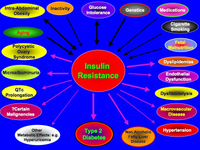
(Click on the graphic to expand it.)
The Main Causes of Insulin Resistance are:
- Aging
- Intra-abdominal obesity
- Inactivity
- Glucose intolerance
- Genetics
- Fetal malnutrition
- Cigarette smoking
- Some medications
The Main Consequences of Insulin Resistance are:
- Type 2 diabetes mellitus
- Hypertension
- Arteriosclerosis
- Polycystic ovarian syndrome
- Non alcoholic fatty liver disease
- Disturbances in the function of the vascular endothelium
- Elevations of triglycerides and cholesterol
- Disturbances of clotting
- Disturnaces in kidney function
- DIsturbances in one type of heart rhythm
- Elevated uric acide levels
- Some malignancies
This is probably not a complete list, but it gives you a very good idea of the reasons for looking for insulin resistance. Many – but not all – experts now recommend measuring insulin resistance in people at high risk of developing any of these medical problems.
We have good evidence that lifestyle changes can prevent the development of many of these dire consequences, so it is certainly something worth discussing with your health care provider.
Colon Cancer: Improving the Chances of Cure

I was very pleased to see how many people have read and downloaded the advice about reducing your risk of colon cancer. I was also very happy with the announcement this morning that Tony Snow’s cancer has not spread to his liver.
People who develop cancer of the colon can often be cured of their original tumors, but some grow back and then they can be more difficult to eradicate. Most relapses occur within 2.5 to 3.0 years. If a tumor has not returned within five years, many doctors consider that the patient has been cured.
The risk of getting a tumor and of it recurring is greater if there is some “predisposing factor,” including a positive family history for colon cancer, familial polyps of the colon or inflammatory bowel disease. The risk of recurrence is also higher in people who get the illness before the age of fifty. We are beginning to see the emergence of genetic tests that can help predict people at high risk of developing colon cancer. People with any of these factors should get particularly careful screening.
Over the last ten years several new drugs for the treatment of colon cancer have been approved by the Food and Drug Administration:
Avastin (Bevacizumab)
Camptosar (Irinotecan)
Eloxatin (Oxaliplatin)
Erbitux (Cetuximab)
Vectibix (Panitumumab)
None is a cure, but they may help in people whose disease has spread to other organs. Most are used in combination with older and often more toxic chemotherapies.
Colorectal cancer is the number two cause of cancer-related death in the United States. It is estimated that there will be 153,000 new cases this year that will ultimately result in 52,000 deaths. The earlier that the disease is caught, the better the chance of a cure. The American Cancer Society has published these five-year survival figures:
Stage 1 – Limited to the colon 93%
Stage 2 – Spread through the wall of the colon 72-85%
Stage 3 – Spread to local lymph nodes 44-83%
Stage 4 – Spread to other organs 8%
Bear in mind that even the most gloomy figures are only based on current treatments: we do not know what the future holds.
The data are also for people who have only had conventional treatments. Integrated Medicine suggests using conventional treatment as well as addressing the psychological, social, subtle and spiritual aspects of the illness. We have little empirical data that such a comprehensive approach works better than conventional medicine alone, but clinicians around the world have accumulated a great deal of experience to indicate that this kind of comprehensive approach helps not only with survival, but also in quality of life and in comprehending the meaning and purpose of the illness.
Blueberries and Colon Cancer
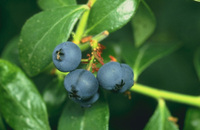
I have been delighted to see how many people have read and downloaded my Twelve Tips to Reduce Your Risk of Colon Cancer.
There is some new research that was just presented at the shows tha there is a compound in blueberries called pterostilbene that may help protect against the development of colon cancer.
Researchers from Rutgers University and the US Department of Agriculture presented their findings at the meeting of the American Chemical Society in Chicago.
Pterostilbene is a natural antioxidant that mops up free radicals that may, in excess, trigger the growth of some cancers. Similar antioxidants have already been identified in grapes and red wine. Work in mice suggests that pterostilbene may also lower cholesterol levels. The compound also reduced inflammation and the rate of cell division in the bowel both of which are considered to be cancer risk factors.
Pterostilbene is also found in cranberries, sparkleberries, lingonberries and grapes.
It is an extremely good idea to add blueberries to your diet. Do not overdo it! I worry when people extol the virtues of some super-food or super-drink that is supposed to abolish all of your free radicals. Despite the claims of at least one medical correspondent on Fox New, there is usually no evidence that they do so. And in any case, you do not want to abolish all your free radicals: they are key cancer killers.
You want to balance and modulate the free radicals in your body, and blueberries, together with four other portions of fruit and vegetables a day are one excellent way of doing so.
Anti-inflammatories and Colon Cancer
I just had a very good question after I published my list of Twelve Tips to Reduce Your Risk of Colorectal Cancer.
Dear Dr. Petty,
“That’s a great list, but I am wondering why you haven’t included aspirin or other non-steroidal anti-inflammatory drugs (NSAIDs)? I thought that they had been shown to reduce the risk of colon cancer.”
This is an excellent question, and I deliberately omitted mention of anti-inflammatories because the research suggests that they may cause more harm than good.
There is a report in today’s edition of the Annals of Internal Medicine from the United States Preventive Services Task Force, a highly regarded and independent panel of experts in primary care and prevention, that confirms that screening for colorectal cancer is still important and everyone over 50 should have it. But they urge caution on taking preventive drugs, saying that on balance the health risks of aspirin outweigh the benefits when it comes to preventing colon cancer. This advice holds even for those people with a family history of the disease, as long as they have only an average risk of colon cancer. (20 per cent of people who get colorectal cancer also have a close relative with the disease, with proportionally more cases among African Americans than other races.)
They found good evidence that high doses of aspirin (i.e. 300 mg a day or more) and possibly ibuprofen protect against colorectal cancer but this comes with increased risk of intestinal bleeding, stroke and kidney failure.
In low doses – under 100 mg a day – the Task Force says that good evidence supports the notion that aspirin protects against heart disease. However, at this dosage it will have no preventive effect on colorectal cancer.
The US Preventive Services Task Force regularly reviews the available research evidence and issues advice based on what they regard the strength of the evidence to be. They use a grades to help guide practice. For example a grade A recommendation is equal to "strongly recommends", while a B is just "recommends", and C is "no recommendation for or against".
In this case the Task Force has issued a grade D "recommends against" to the routine use of aspirin and NSAIDs to prevent colorectal cancer.
So for now I recommend following the Twelve Tips that I published yesterday.
Twelve Tips to Reduce Your Risk of Colorectal Cancer
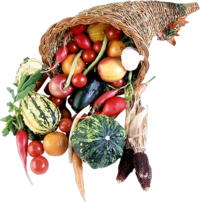
Colon cancer, or, more accurately colorectal cancer, includes cancerous growths in the colon, rectum and appendix. It is the third most common form of cancer and the second leading cause of death among cancers in the Western world. Colorectal cancer surpasses breast and prostate cancers as a leading cause of cancer deaths in both men and women.
And the key point is that with early screening and a few simple dietary modifications, you can dramatically reduce your risk of getting it.
These are the 12 Tips to Slash Your Risk of Colorectal Cancer
- Receive regular colorectal cancer screenings beginning at age 50 if you are at normal risk
- If you are at higher risk due to a personal or family history of colorectal cancer, other cancers or inflammatory bowel disease have a discussion with your health care provider about screenings before age 50
- Eat between 25 and 30 grams of fiber each day from fruits, vegetables, whole grain breads and cereals, nuts, and beans
- Eat a low-fat diet: colorectal cancer has been associated with diets high in saturated fat, particularly fat from red meat
- Eat foods with folate, such as leafy green vegetables
- Try to drink at least 80 fluid ounces of pure water a day unless you have a medical reason for not doing so
- Drink alcohol in moderation: 2 units of alcohol or less each day
- If you smoke, here is another good reason for quitting. Alcohol and tobacco in combination are linked to colorectal cancer and other gastrointestinal cancers
- Exercise for at least 20 minutes three to four days a week. Moderate exercise such as walking, gardening or climbing stairs may help reduce your risk
- If you get any persistent symptoms such as blood in the stool, a change in bowel habits, weight loss, narrower-than-usual stools, abdominal pains or other gastrointestinal complaints, it is essential to report them to your health care provider
- Maintain a healthy weight. Obesity may increase the risk of colorectal cancer
- Maintain a good intake of calcium and vitamin D: this combination has been shown to reduce the risk of colorectal cancer
For more information, I recommend visiting the Web site of the American Cancer Society.
I keep their details in the “Resources” section on the left hand side of this blog.
Prayer and Healing

We have already talked a little about the associations between active, healthy spirituality and psychological and physical well-being.
Yet another study has highlighted the connection, showing that breast cancer patients who pray in online support groups can obtain mental health benefits.
Researchers from the University of Wisconsin-Madison Center of Excellence in Cancer Communications Research did the study that was that was funded by the National Cancer Institute.
The research looked at message transcripts from 97 breast cancer patients participating in an online support group that was integrated with the Comprehensive Health Enhancement Support System (CHESS) “Living with Breast Cancer” program, a computer-based health education and support system. The patients were recruited from Wisconsin and Michigan.
Surveys were administered before group access and then again four months later. Text messages within the computer-mediated support groups were analyzed using a text analysis program that measured the percentage of words that were suggestive of religious belief and practice (e.g., pray, worship, faith, holy, God). Writing a higher percentage of these religious words within the online support groups was associated with lower levels of negative emotions and higher levels of self-efficacy and functional well-being, even after controlling for patients’ pre-test levels of religious beliefs.
One of the researchers had this to say:
“From a psychological standpoint, there are a variety of reasons why cancer patients may benefit from prayer – whether on the Internet or elsewhere. In reviewing the messages, some of the most common ways study participants used religion to cope with their illness included putting trust in God about the course of their illness and consequently feeling less stressed, believing in an afterlife and therefore being less afraid of death, finding blessings in their lives and appraising their cancer experience in a more constructive religious light.”
And that is, of course, one set of explanations for the findings.
Or perhaps, as we have seen before, there is a growing body of research to indicate that prayer is effective.
We just have to expect it to be effective. And isn’t that faith?
“Prayer, like radium, is a luminous and self-generating form of energy.”
–Alexis Carrel (French-born American Surgeon, Experimental Biologist and, in 1912, Winner of the Nobel Prize for Medicine or Physiology, 1873-1944)
“Too often we see prayer as a last resort rather than as our first thought. People will say, “I guess all we can do now is pray!” like that’s the last thing, horrible thing to do. And your friend says, “Has it come to that?! Is it so hopeless that all we can do is pray?”
–Rick Warren (American Evangelist and Author, 1954-)
“Though God knows all our needs, prayer is necessary for the cleansing and enlightenment of the soul.”
— John Sergieff of Kronstadt (Russian Priest who, in 1882, Established the House of Industriousness, 1829-1909)
“Man often thinks that, as God is the knower of the heart, there can be no need of any recital or gesture in prayer: but that it would surely be sufficient if he were to sit in the silence and think of God. But this is not so; it is according to the extent of a man’s consciousness of prayer that his prayer reaches God.”
–Hazrat Inayat Khan (Founder of the Sufi Order of the West, 1882-1927)
“Through prayer, the love of God grows and assumes a form which is called supreme devotion. Forms vanish, rituals fly away, books are superseded, images, temples, churches, religions and sects, countries and nationalities – all these little limitations and bondages fall off by their own nature from him who knows this love of God.”
–Swami Vivekananda (Indian Hindu Mystic and Spiritual Teacher, 1863-1902)
“Prayer is part of man’s original nature. He can never be satisfied with merely meditative religion, and naturally and involuntarily inclines to move on to the religion of prayer.”
–Toyohiko Kagawa (Japanese Christian Anti-War Campaigner, 1888-1960)
“All true prayer somehow confesses our absolute dependence on the Lord of life and death.”
Thomas Merton (French-born American Trappist Monk and Writer, 1915-1968)
“There is a relationship between prayer and action. Receptive prayer results in an inner receiving, which motivates to right action.”
— “Peace Pilgrim” (a.k.a. Mildred Norman, American Peace Activist, 1908-1981)
Checking Data
Following my brief piece on the sun and some of its potentially adverse effects, someone was kind enough to leave this comment:
"Don’t forget that skin cancer is cured by melatonin and vitamin A.
Reference 1
Reference 2
I am extremely grateful that he wrote, because it gives me the opportunity to illustrate the point about checking the data. The person who wrote was obviously motivated by a desire to help, but he had been given some information that was not correct.
I pulled out both of these papers and discovered that they said something rather different.
The first paper in the Indian Journal of Medical Sciences is quite a good review article about melatonin. There are several reasons for us to be interested in melatonin, and I actually plan to write a brief review about it as soon as I have finished analyzing the literature. There is indeed some experimental work to suggest that melatonin may modulate and in some cases arrest the growth of some malignant cell lines (1. 2. 3.) But we are still a long way from being able to say that melatonin is a viable treatment option for melanoma.
The second paper does not talk about melanoma treatment at all: it is a paper about the possible use of Vitamin A as protection against cancer in sun-damaged skin.
As I mentioned in my piece about the new open access journals, our next task is to help people learn how to interpret the data in all of these papers. I am on the review and editorial boards for several scholarly research journals and it is amazing how often the article summary does not tally with the data in the paper.
And also how often people cite articles that they cannot have read. Within the last 24 hours, the editor of a well-known journal asked me to review a research paper that had been submitted for publication. There was very interesting data in the paper, but the author had made at least one error in his citations. He accidentally claimed that a piece of research had discovered one thing, when the research had actually said something quite different. I happened to know that because I wrote the original paper!
This problem of misinterpreting data keeps coming up, and I’m sure that we may all have missed something at some time. It’s sometimes hard to analyze all the ins-and-outs of a piece of research.
You may have heard about a bit of a scandal over a book on gender differences that was just published. I liked reading the book, but I was worried about some of the references about hormonal effects on behavior. I know this literature very well, and some of the statements and inferences were a bit questionable. Now several experts have been checking some of the citations about gender differences in language that were used by the author. They discovered that some were just plain wrong.
Have you ever heard that one about, “Women talk more than men?” It always sounded pretty silly. And of course, if something sounds silly it probably is. Does it matter? If someone is going to write a popular book, good luck to them: I actually think that scientists have a duty to make their work accessible to the public.
But if they quote a lot of papers to give themselves an air of authority, they really have to make sure that they are not misleading anyone. If some references are wrong, then it’s difficult to be sure which ones we can trust.
We cannot have one set of rules for a book written for professionals and another for the general public. Each must be created with the utmost care, clarity and attention to detail.
My last book and CD series – Healing, Meaning and Purpose – cites over 800 books and websites, all carefully checked by yours truly. I did this just so that people can follow up on what I say. That way my books, articles, papers – even this blog – become portals to a world of ideas and information that you can use to improve your life.
Here Comes the Sun: To Screen or Not To Screen?
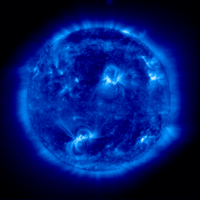
I have been worried to see some people – all, I think, without scientific training – proclaiming that there is no need to protect ourselves against the sun because there is no evidence that sulight causes any health problems.
Ultraviolet radiation (UVR) from the sun has been part of the environment since the first cells began to form. When we discuss the effects of UVR on human health and the environment, the range of UV wavelengths is often subdivided into:
- UVA (400–315 nm), also called Long Wave or “blacklight”
- UVB (315–280 nm), also called Medium Wave
- UVC (< 280 nm) also called Short Wave or “germicidal”
The key questions are these:
Can sunlight cause health problems?
Do the benefits of sunlight outweigh their risks?”
UVB is required for the conversion of 7-deoxycholesterol to vitamin D, (the sunshine vitamin!) which is critically important in the maintenance of healthy bones, although there may also be another mechanism by which vitamin D is generated in the body. As we have seen research is making clear that vitamin D has other potential roles in the maintenance of human health. Low levels of vitamin D have been linked to:
- Rickets
- Osteomalacia
- Osteoporosis
- Maintaining the integrity of cell membranes
- Type 2 diabetes mellitus
- Schizophrenia
- Multiple sclerosis
- Pre-eclampsia (hypertension and accompanying problems during the late stages of pregnancy)
- Some types of cancer
- Fibromyalgia-like pains
- Immune deficiency: Africa Americans do not generate enough of a protein needed to ward off tuberculosis. Why? Because the protein needs vitamin D to be activated, and dark skin is inefficient at absorbing and converting UVR. It may also be that we see epidemics of colds and flu in the winter because that is when we have low levels of vitamin D, which allows the viruses to overwhelm our immune defenses.
This does not necessarily mean that taking extra vitamin D will ward off all of these problems.
In the days before the Industrial Revolution, unless we lived in the frozen North, we had no trouble in getting the amount of vitamin D that we needed. In most of the United States, during the summer months, 10-15 minutes outdoors at midday will generate around 10,000 international units (IU’s) of vitamin D in an average fair-skinned person. This is far in excess of the government’s dietary recommendations of 200 IU’s/day in people up to age 50, 400 IU’s up to age 70 and 600 IU’s in people over 70. Not surprisingly many experts – me included – believe and have provided evidence that these daily requirements are much too low. (Have a look at the comments here.)
Of course many of us do not spend much time outside and don’t take in as much in the way of vitamin D containing foods – such as milk and salmon – as we should. I’ve seen evidence to suggest that we in Atlanta are probably at the Northernmost point in the United States were we could hope to get enough sunshine and therefore vitamin D from modest winter exposure to the sun.
Recent data has suggested that if you spend no time at all in the sun, then you may need as much as 4,000 IU’s of vitamin D/day, though that figure has not yet been widely accepted.
Exposure to UVR, whether of solar or artificial origin, also carries potential risks to human health. UVR is a known carcinogen and excessive exposure, at least to the solar radiation in sunlight, increases the risk of cancer of the lip, basal cell, and squamous cell carcinoma of the skin and melanoma, particularly in fair-skinned populations. There is also evidence that solar UVR increases risk of several diseases of the eye, including cortical cataract, some conjunctival neoplasms, and perhaps also melanoma of the eye.
We have good data for the existence of a threshold amount of UV-B exposure that may lead to the formation of cataracts. The amount needed to cause cataracts depends in part on the amount of pigment in the eye, so albino rats get cataracts with much lower exposures to UV-B.
So what to do?
Sunlight has a definite benefit in preventing or treating many clinical problems and it is no surprise that after 3000 millennia we are adapted to make use of the sun’s largesse. What is less easy to understand is why an excess of sunlight can cause so many problems, unless it is our hairlessness and environmental change that has lead to a loss of the ozone layer.
Some years ago it was suggested that sunscreens may themselves cause skin cancer, but the data has shown that to be false. Indeed modern sunscreens almost certainly reduce melanoma risk.
So how do we balance the positive and negative effects of sunlight? A recent review precisely reflects my own thinking:
- We need some sunlight
- Depending on where you live, you need only a few minutes each day
- Sunscreens confer protection on the skin without blocking all the health benefits
- If you have a medical reason for avoiding sunlight, then your health care provider should measure your vitamin D status.

